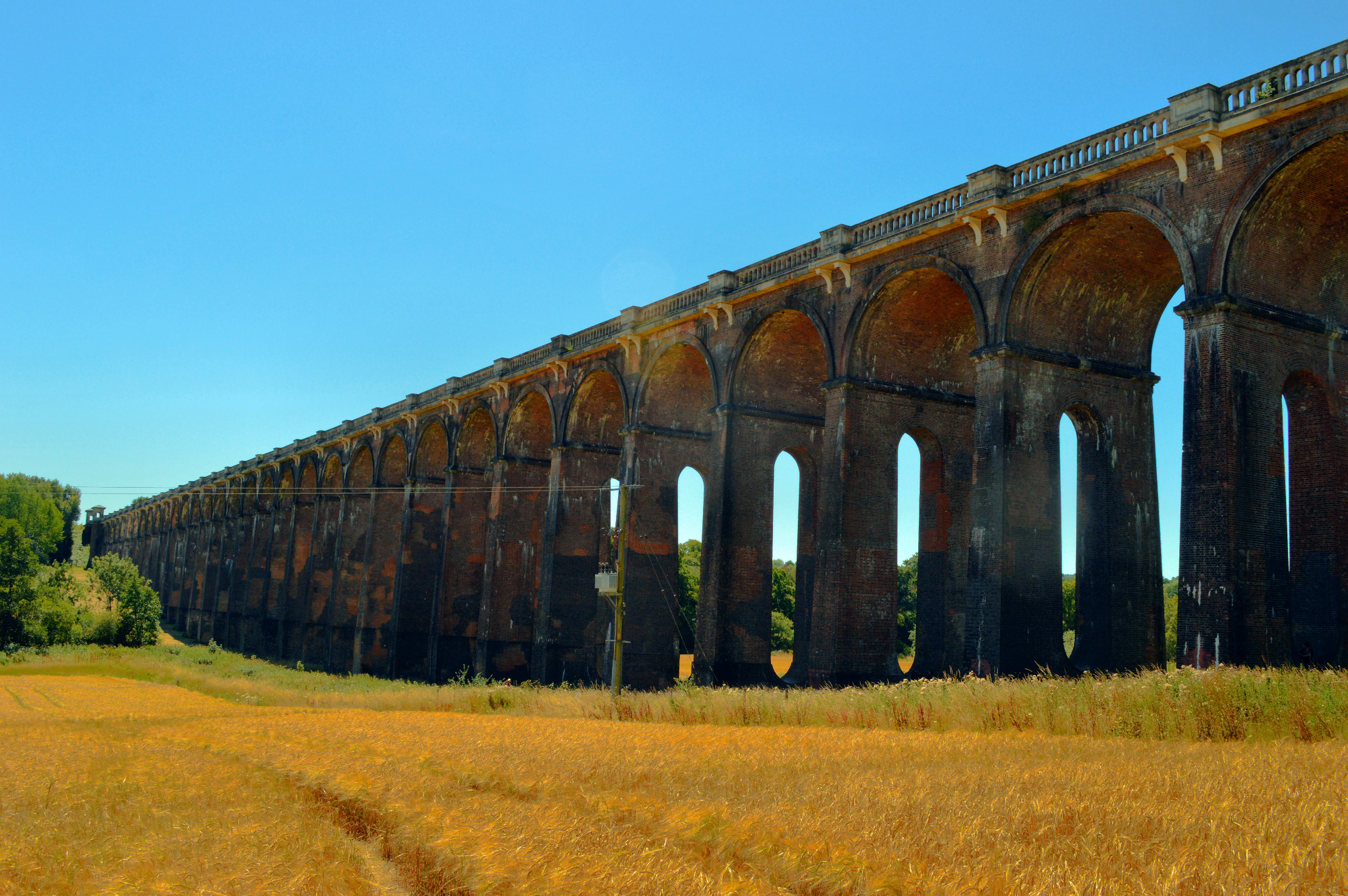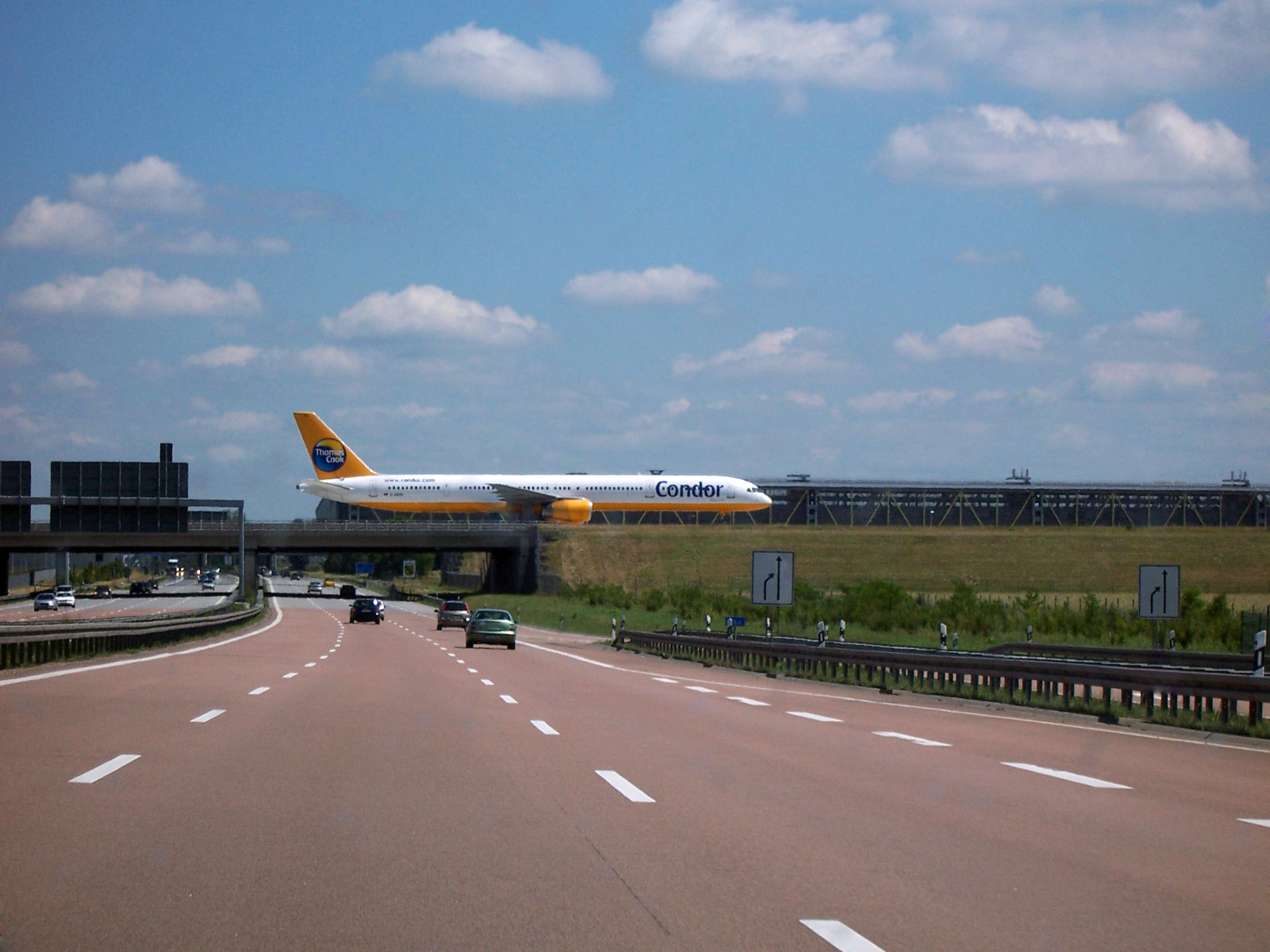|
Viaducts
A viaduct is a specific type of bridge that consists of a series of arches, piers or columns supporting a long elevated railway or road. Typically a viaduct connects two points of roughly equal elevation, allowing direct overpass across a wide valley, road, river, or other low-lying terrain features and obstacles. The term ''viaduct'' is derived from the Latin ''via'' meaning "road", and ''ducere'' meaning "to lead". It is a 19th-century derivation from an analogy with ancient Roman aqueducts. Like the Roman aqueducts, many early viaducts comprised a series of arches of roughly equal length. Over land The longest viaduct in antiquity may have been the Pont Serme which crossed wide marshes in southern France. At its longest point, it measured 2,679 meters with a width of 22 meters. Viaducts are commonly used in many cities that are railroad hubs, such as Chicago, Birmingham, London and Manchester. These viaducts cross the large railroad yards that are needed for freight ... [...More Info...] [...Related Items...] OR: [Wikipedia] [Google] [Baidu] |
Trestle Bridge
A trestle bridge is a bridge composed of a number of short spans supported by closely spaced frames usually carrying a railroad line. A trestle (sometimes tressel) is a rigid frame used as a support, historically a tripod used to support a stool or a pair of isosceles triangles joined at their apices by a plank or beam such as the support structure for a trestle table. Each supporting frame is a bent. A trestle differs from a viaduct in that viaducts have towers that support much longer spans and typically have a higher elevation. Timber and iron trestles (i.e. bridges) were extensively used in the 19th century, the former making up from 1 to 3 percent of the total length of the average railroad. In the 21st century, steel and sometimes concrete trestles are commonly used to bridge particularly deep valleys, while timber trestles remain common in certain areas. Many timber trestles were built in the 19th and early 20th centuries with the expectation that they would be te ... [...More Info...] [...Related Items...] OR: [Wikipedia] [Google] [Baidu] |
Prince Edward Viaduct
The Prince Edward Viaduct System, commonly referred to as the Bloor Viaduct, is the name of a truss arch bridge system in Toronto, Ontario, Canada, connecting Bloor Street East, on the west side of the system, with Danforth Avenue on the east. The system includes the Castle Frank Brook, Rosedale Valley phase (a smaller structure, referred to as the Rosedale Valley Bridge, carrying Bloor Street over the Rosedale, Toronto, Rosedale Ravine) and the Sherbourne Phase, an Embankment (transportation), embankment built to extend Bloor Street East to the Rosedale Ravine from Sherbourne Street, Toronto, Sherbourne Street. The Don Valley phase of the system, the most recognizable, spans the Don River (Ontario), Don River Valley, crossing over (from west to east) the Bayview Avenue Extension, the Don River, and the Don Valley Parkway. The roadway has five lanes (three eastbound and two westbound) with a bicycle lane in each direction. The Toronto subway, subway level connects Broadview station ... [...More Info...] [...Related Items...] OR: [Wikipedia] [Google] [Baidu] |
Bridge
A bridge is a structure built to Span (engineering), span a physical obstacle (such as a body of water, valley, road, or railway) without blocking the path underneath. It is constructed for the purpose of providing passage over the obstacle, which is usually something that is otherwise difficult or impossible to cross. There are many different designs of bridges, each serving a particular purpose and applicable to different situations. Designs of bridges vary depending on factors such as the function of the bridge, the nature of the terrain where the bridge is constructed and anchored, the material used to make it, and the funds available to build it. The earliest bridges were likely made with fallen trees and stepping stones. The Neolithic people built boardwalk bridges across marshland. The Arkadiko Bridge, dating from the 13th century BC, in the Peloponnese is one of the oldest arch bridges in existence and use. Etymology The ''Oxford English Dictionary'' traces the origin of ... [...More Info...] [...Related Items...] OR: [Wikipedia] [Google] [Baidu] |
Laigh Milton Viaduct
Laigh Milton Viaduct is a railway viaduct near Laigh Milton mill to the west of Gatehead, Ayrshire, Gatehead in East Ayrshire, Scotland, about west of Kilmarnock. It is probably the world's earliest surviving railway viaduct on a public railway,Roland Paxton and Jim Shipway, ''Civil Engineering Heritage: Scotland Lowlands and Borders'', Thomas Telford Publishing, London, 2007, . and the earliest known survivor of a type of multi-span railway structure subsequently adopted universally. The viaduct was restored in 1995–1996Sou' West the G&SWR Newsletter, P.5 and is a Category A listed structure since 1982. It bridges the River Irvine which forms the boundary between East Ayrshire and South Ayrshire. It was built for the Kilmarnock and Troon Railway, opened in 1812; the line was a horse drawn plateway (although locomotive traction was tried later). The first viaduct was closed in 1846 when the railway line was realigned to ease the sharp curve for locomotive operation, and a woo ... [...More Info...] [...Related Items...] OR: [Wikipedia] [Google] [Baidu] |
Ouse Valley Viaduct 02
Ouse ( ) may refer to: Places Rivers in England * River Ouse, Yorkshire * River Ouse, Sussex * River Great Ouse, Northamptonshire and East Anglia ** River Little Ouse, a tributary of the River Great Ouse Other places * Ouse, Tasmania, a town in Australia * The Ouse, an estuary on Shapinsay, in the Orkney Islands, Scotland * Grand River (Ontario), Canada, formerly known as the Ouse Ships * MV ''River Ouse'', an Empire F type coaster in service with R H Hunt & Sons, Hull, 1947-52 * HMS ''Ouse'' (1905), a River-class destroyer of 1905 See also * Ouse Bridge (other) * Oise a department in northern France * Oise (river), a river in Belgium and northern France * Ouseburn, a river in Tyne and Wear, England * * * List of rivers of the United Kingdom For details of rivers of the United Kingdom, see * List of rivers of England * List of rivers of Scotland * List of rivers of Wales * Northern Ireland: see List of rivers of Ireland and Rivers of Ireland * Longest rivers ... [...More Info...] [...Related Items...] OR: [Wikipedia] [Google] [Baidu] |
Toronto Subway
The Toronto subway is a rapid transit system serving Toronto and the neighbouring city of Vaughan in Ontario, Canada, operated by the Toronto Transit Commission (TTC). The subway system is a rail network consisting of three heavy-capacity rail lines operating predominantly underground. three new lines are under construction: two light rail lines (one running mostly underground, the other running mostly at-grade) and one heavy rail line (running both underground and on elevated guideways). In 1954, the TTC opened Canada's first underground rail line, then known as the "Yonge subway", under Yonge Street between Union Station and Eglinton Avenue with 12 stations. As of 2024, the network encompasses 70 stations and of route. In , the system had a ridership of , or about per weekday as of , making it the busiest rapid transit system in Canada in terms of daily ridership. There are 60 stations under construction as part of three new lines, two light rail lines and one subway li ... [...More Info...] [...Related Items...] OR: [Wikipedia] [Google] [Baidu] |
Bloor Street
Bloor Street is an east–west arterial road in Toronto, Ontario, Canada. Bloor Street runs from the Prince Edward Viaduct, which spans the Don River (Ontario), Don River Valley, westward into Mississauga where it ends at Central Parkway. East of the viaduct, Danforth Avenue/Danforth Road, Danforth Avenue continues along the same Right-of-way (transportation), right-of-way. The street, approximately long, contains a significant cross-sample of Toronto's ethnic communities. It is also home to Toronto's famous shopping street, the Mink Mile. A portion of Line 2 Bloor–Danforth, Line 2 of the Bloor-Danforth subway line runs along Bloor from Kipling Avenue to the Don Valley Parkway, and then continues east along Danforth Avenue. History Originally surveyed as the first concession road north of the baseline (then Lot Street, now Queen Street), it was known by many names, including the Tollgate Road (as the first tollgate on Yonge north of Lot Street was constructed there in 1820) ... [...More Info...] [...Related Items...] OR: [Wikipedia] [Google] [Baidu] |
Grade Separation
In civil engineering (more specifically highway engineering), grade separation is a method of aligning a junction of two or more surface transport axes at different heights ( grades) so that they will not disrupt the traffic flow on other transit routes when they cross each other. The composition of such transport axes does not have to be uniform; it can consist of a mixture of roads, footpaths, railways, canals, or airport runways. Bridges (or overpasses, also called flyovers), tunnels (or underpasses), or a combination of both can be built at a junction to achieve the needed grade separation. In North America, a grade-separated junction may be referred to as a ''grade separation'' or as an '' interchange'' – in contrast with an ''intersection'', '' at-grade'', a '' diamond crossing'' or a ''level crossing'', which are not grade-separated. Effects Advantages Roads with grade separation generally allow traffic to move freely, with fewer interruptions, and at higher overall ... [...More Info...] [...Related Items...] OR: [Wikipedia] [Google] [Baidu] |
Freight Train
A freight train, also called a goods train or cargo train, is a railway train that is used to carry cargo, as opposed to passengers. Freight trains are made up of one or more locomotives which provide propulsion, along with one or more railroad cars (also known as wagons) which carry freight. A wide variety of cargoes are carried on trains, but the low friction inherent to rail transport means that freight trains are especially suited to carrying bulk and heavy loads over longer distances. History The earliest recorded use of rail transport for freight was in Babylon, circa 2200 B.C.E. This use took the form of wagons pulled on wagonways by horses or even humans. Locomotives Freight trains are almost universally powered by locomotives. Historically, steam locomotives were predominant, but beginning in the 1920s diesel and electric locomotives displaced steam due to their greater reliability, cleaner emissions, and lower costs. Freight cars Freight trains carry cargo i ... [...More Info...] [...Related Items...] OR: [Wikipedia] [Google] [Baidu] |
Railroad Yard
A rail yard, railway yard, railroad yard (US) or simply yard, is a series of tracks in a rail network for storing, sorting, or loading and unloading rail vehicles and locomotives. Yards have many tracks in parallel for keeping rolling stock or unused locomotives stored off the main line, so that they do not obstruct the flow of traffic. Cars or wagons are moved around by specially designed yard switcher locomotives (US) or shunter locomotives (UK), a type of locomotive. Cars or wagons in a yard may be sorted by numerous categories, including railway company, loaded or unloaded, destination, car type, or whether they need repairs. Yards are normally built where there is a need to store rail vehicles while they are not being loaded or unloaded, or are waiting to be assembled into trains. Large yards may have a tower to control operations. Many yards are located at strategic points on a main line. Main-line yards are often composed of an up yard and a down yard, linked to the a ... [...More Info...] [...Related Items...] OR: [Wikipedia] [Google] [Baidu] |





